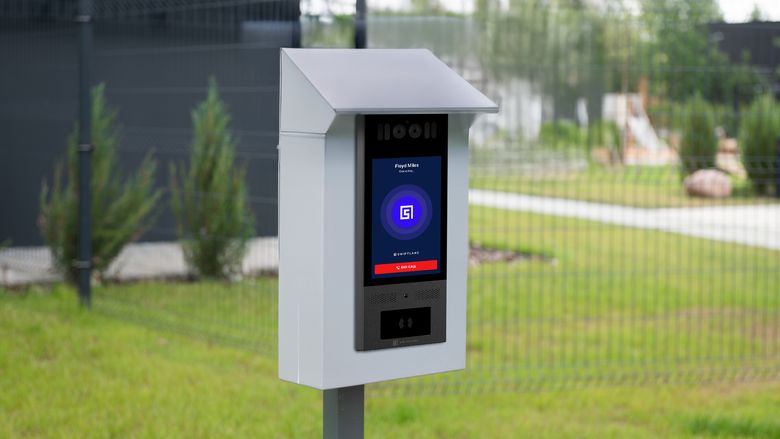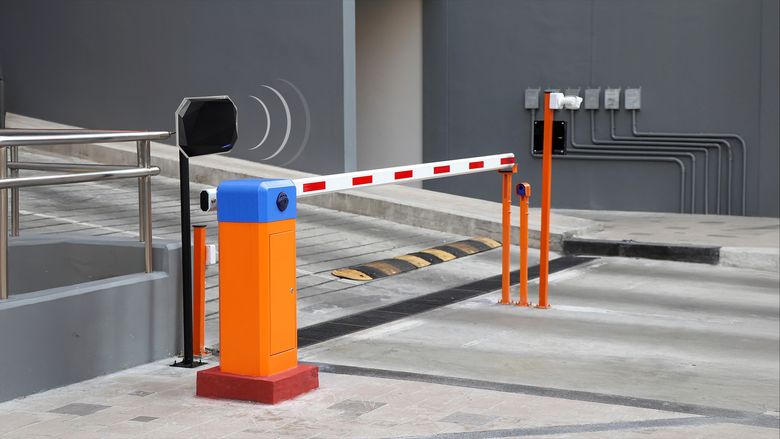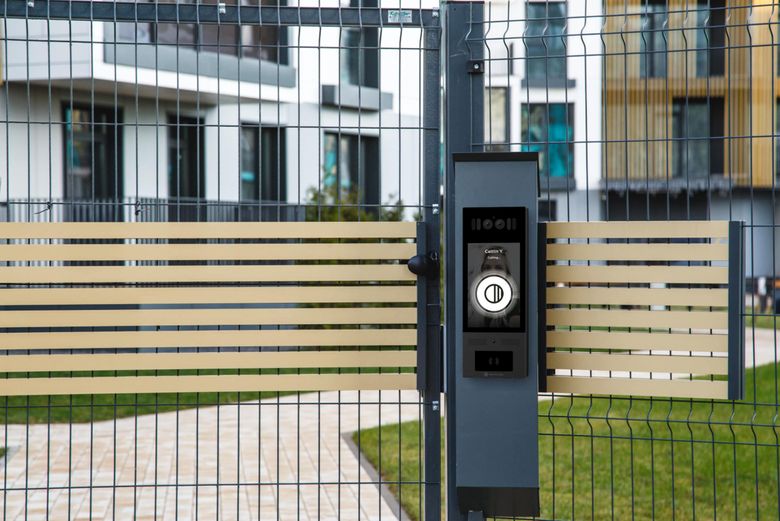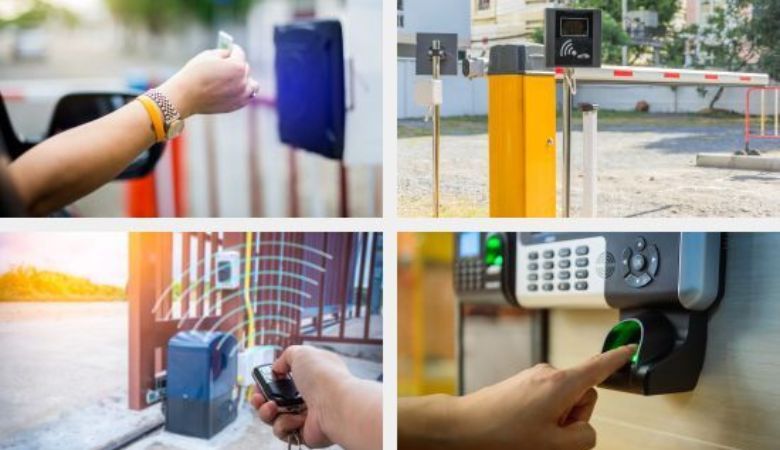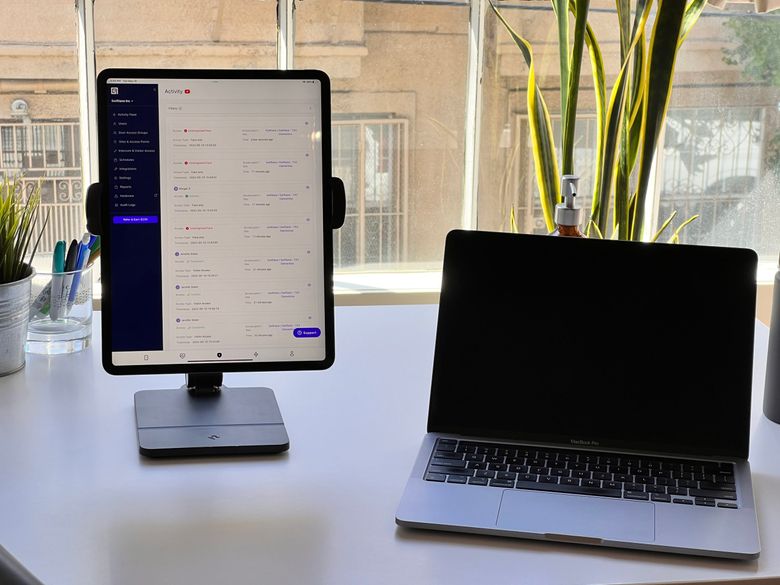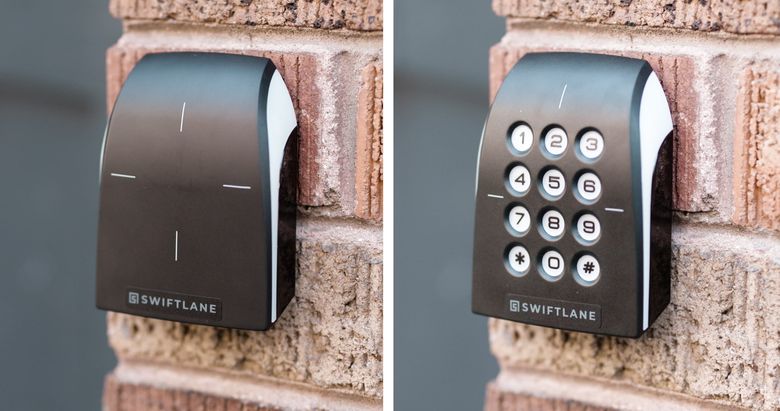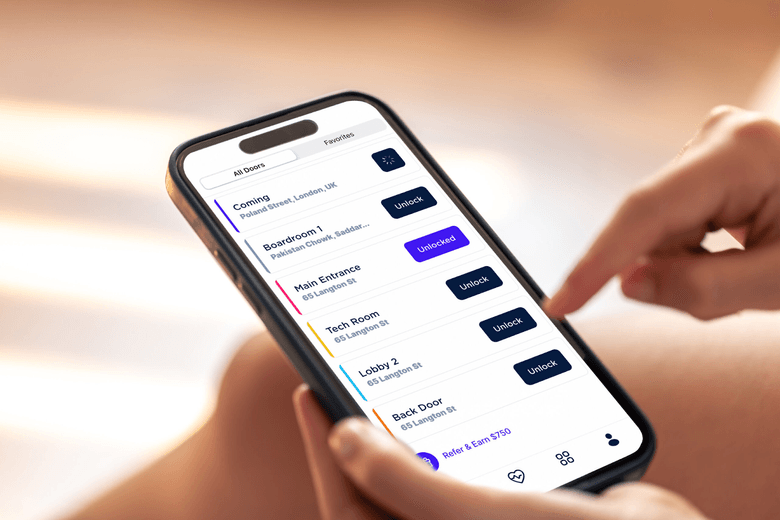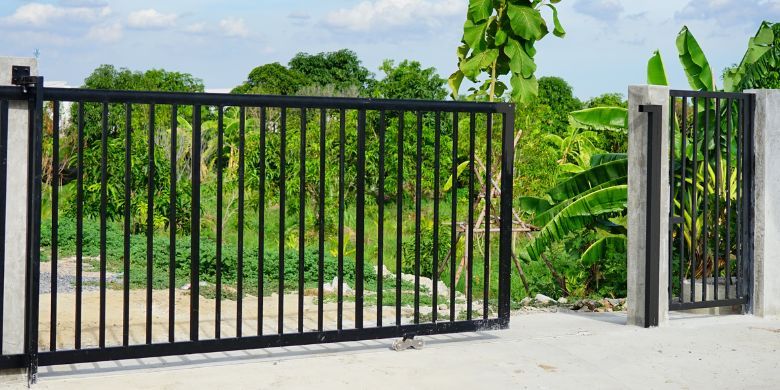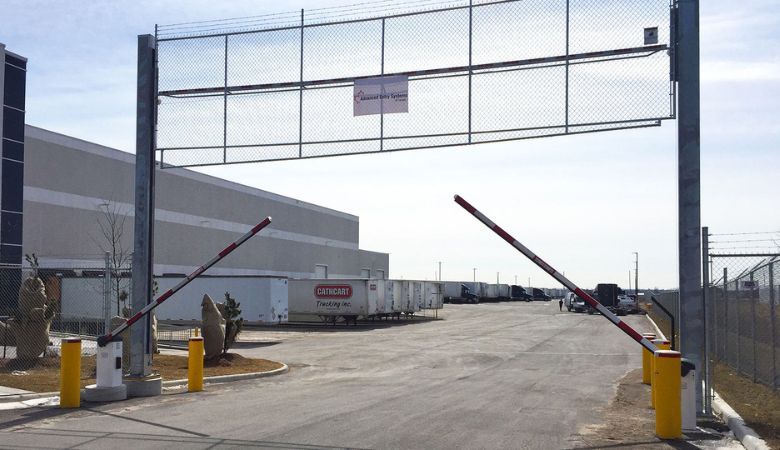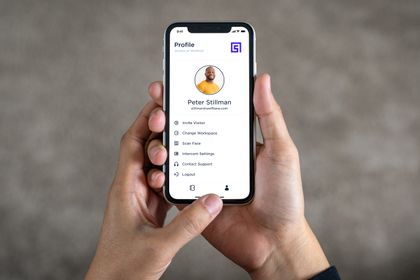Gate security systems are access control solutions designed to manage and restrict entry to a property through a gated entrance. They are used to control the flow of people and traffic (e.g, pedestrian gates, vehicle gates). They are often integrated into a larger wall or fence that surrounds the overall property, community, or an amenity like a pool or tennis court.
Security gate access control systems are commonly used in residential communities, commercial buildings, industrial sites, and private estates to enhance safety, privacy, and operational control. Whether you are a property owner, property manager, business owner, or a member of the board for a condo association or HOA community, we have got you covered with the need-to-know information about gate security.
In this article, we cover:
- The essential components of security gate access control
- Why gate security has become so important today
- Different types of access control credentials
- Various security levels of gate hardware
- How to get started in purchasing a gate and an access control solution.
Related:
- Gate Access Control Systems – A Complete Buyer’s Checklist
- Campus and School Security System: Must Have Features in 2025
Table of Contents
- Safety First: The Growing Demand for Front Gate Security Systems
- Why Buildings and Communities Turn to Gate Access Control
- Key Components of Gate Security Systems
- Who Benefits from Gated Community Access Control?
- What is the Best Gate Access Control System?
- Security Gate Access Control Levels
- Gate Types For All Security Levels
- How To Obtain a Gate Security System
- Still Have Questions? Swiftlane Has Answers
Safety First: The Growing Demand for Front Gate Security Systems
Keeping communities and individual properties safe and secure is a top priority for residential developers, property managers, community board members, and owners of gated communities and homes. Gate security is increasingly popular. For instance, the proportion of Americans living in gated communities has been climbing steadily since the 1990s, rising to an estimated 15 million in recent years, according to one analysis by Type Ashton, a Doctor of Geography.
Gate security has many applications beyond residential communities and has become a valuable tool for a wide array of property types and communities:
- Residential gated communities: To allow resident and visitor access while keeping out unauthorized individuals.
- Commercial properties: To control employee and delivery access, often with time-restricted credentials, and to protect the workforce, inventory, and intellectual property.
- Hotels, motels, and resorts: To manage parking, limit access to facilities and grounds, or protect the property in dangerous areas.
- Utilities, Industrial & Construction sites: To monitor trucks and personnel entering/exiting high-security or hazardous areas and to keep the general public safe while also protecting inventory and heavy equipment.
- Private homeless: For privacy and security, and to protect driveways and entryways, often with video calling features for visitor verification.
Why Buildings and Communities Turn to Gate Access Control
Today, access control solutions are more critical than ever. Across many communities and building types, foot traffic and vehicle congestion are rising due to:
- Increasing use of food, meal kits, and grocery deliveries
- Online shopping and package deliveries (e.g. Amazon, FedEx, UPS, etc)
- Service workers, such as landscapers, house cleaners, and pet care
- Childcare providers, including tutors, babysitters, and nannies
- Visits by friends and family
- Or, simply the everyday coming and going of employees to and from their workplace.
As traffic increases, it can create traffic bottlenecks and bog down your property management or gate staff. A modern gate security system, such as one with smartphone access control and an online management platform, can provide seamless access to authorized users while providing added security.
Some of the key reasons for installing gate security today include:
- Eliminate Package Theft: Would-be “porch pirates” target residential communities and will steal packages or even food deliveries from the entrances of buildings or the front porches of single-family homes.
- Protect Inventory and Valuables: Whether a gated property is residential, commercial, or industrial, there is often valuable property or equipment worth protecting. Gate security systems help keep out potential thieves.
- Stop Parking Poachers and Traffic: Communities of all types are installing gate access control to limit excess traffic, speeding, and to protect limited parking spots from parking poachers.
- Reduce Solicitations: Solicitors go door-to-door, disrupting residents. Let residents prescreen visitors and only allow those they want to meet.
- Protect Youth: Keep kids safe by reducing neighborhood traffic and keeping strangers out. Give parents and the community tools to control access to unsupervised facilities like community gyms or pools.
- Maintain Privacy: With a comprehensive access control system, residents can maintain their privacy, and communities can feel safe and exclusive.
Key Components of Gate Security Systems
As opposed to an ordinary gate, a proper gate security system requires a powered gate with a lock that can unlock for individuals holding the right credentials. Optionally, a gate security system can also be operated by security staff from a gatehouse, usually with significantly higher overhead than a fully automated system. Many gated communities and facilities use a mix of staffed gates for visitors with automated gates for staff or residents.
Systems usually have the following basic components:
The Gate Itself
From rotating barrier arms to sliding wrought iron designs, gates are available in a wide array of formats, materials, and security levels, catering to both pedestrian and vehicular traffic. We cover more about different gate types further below.
Access Control Devices
Some gates are staffed – a guard checks in visitors and pushes a button or enters a code to unlock the gate. Residents or employees typically use a separate automated gate connected to an Access Control Device. The access control device validates their credentials and then automatically opens the gate without any staff intervention.
The most common types of credentialing systems include:
- Keypads – Users enter a numeric code onto a keypad to gain access.
- Card/Fob Readers – Users tap their RFID card or key fob for entry.
- Windshield tags or license plate readers: These alert the gate to the presence of an authorized resident or employee vehicle.
- Intercoms – Allow two-way communication between a visitor at an automated gate and a resident or employee. The resident or employee screens the visitor via live video and then presses a button to open the gate.
- Smartphone Entry Systems – Use mobile apps, Bluetooth, or QR codes for entry. These may also work with various in-car dashboards like CarPlay and Android Auto.
- Biometric Systems – Use fingerprints, facial recognition, or retina scans for high-security environments.
We provide more details about credential types and the different levels of security they provide later.
Gate Operators
These are the mechanical systems and electric motors that open and close the gate. The access control device sends a signal that releases the gate’s electronic lock and then activates the motor to open the gate.
- Can be swing, slide, barrier arm, or vertical lift designs. Common on most vehicle gates.
- Pedestrian gates may use a simple electronic locking mechanism. When the access control device sends a signal, the gate unlocks, and the pedestrian pushes the gate open.
- American Disabilities Act (ADA) compliant pedestrian gates may be powered for differently abled individuals and those in wheelchairs.
Security Cameras
Many gate systems work in coordination with security cameras. When someone approaches the gate, cameras are activated to record who comes and goes from the property or facility. A connected database can store the video or even process it with facial recognition for added security.
Entry/Exit Sensors
In addition to activating security cameras, sensors can detect vehicles or people approaching to automate gate operations or enhance security. Many gates are set to unlock automatically when a person or car approaches from within the gated area.
Remote Management Platforms
Today, many smart gate systems are connected to a cloud-based platform so that the gate can be monitored and controlled remotely by owners or property managers. The platform may also store an access log including who entered, the time, and include photos if cameras are included in the system. Cloud-based platforms eliminate the need for on-site servers and local system programming.
While a security services integrator can typically handle the installation and maintenance of all these components, they are often provided by different manufacturers specializing in gates, motors, or access systems. Different elements are often designed to work interoperably with others, once professionally integrated. We discuss installation further below.
Who Benefits from Gated Community Access Control?
Residents
Gate security systems provide residents with enhanced safety, privacy, and peace of mind by controlling access to a property. These systems help prevent unauthorized access, reduce the risk of theft or vandalism, and create a physical barrier between residents and potential intruders.
For gated communities or apartment complexes, they also help manage visitor access, streamline deliveries, and minimize unwanted solicitation. Additionally, many modern gate systems offer features such as remote access via smartphones, surveillance integration, and real-time entry logs, enabling residents to monitor activity and maintain greater control over their environment.
Property Managers and Board Members
Modern gate access control systems help automate access control for residents or employees, while allowing them to manage the vast majority of their own visitors’ entry requests.
Property managers (or condo or HOA board members) save significant time and staff resources by not having to manage access to community facilities, parking lots, and gates in real time or staff a full-time gatehouse attendant.
In systems with remote management platforms, property managers can update the system from anywhere, easily adding or removing residents without needing to physically program each piece of hardware.
Developers and Owners
Property developers, building owners, and individual homeowners can significantly enhance security and increase property values by implementing a community-wide access control system. Condo and homeowners in an HOA see their property values increase due to the sense of community-wide security provided by our tools. Meanwhile, college administrators and apartment complex owners can provide technology highly sought by residents, which improves tenant satisfaction and keeps occupancy rates high.
Owners of commercial and industrial facilities often find that having a perimeter-wide gate security system helps lower insurance costs and reduce overall risk.
What is the Best Gate Access Control System?
In our experience, there is no such thing as a “best gate access control system” because every property, facility, and community has unique needs. Most private homes don’t need a gate with anti-ramming technology or biometric identification, even though those might be features of gates at a maximum security facility or industrial site. What is “best” is what can meet the use case requirements at a reasonable price. We list different types of gates by access control mechanism and security level further below.
That said, there are a few standout features when it comes to a gate security system, especially those that are used jointly by visitors and authorized community members like residents or employees.
- Remote access – so that community members can remotely open the gate for their authorized guests without having to go to the gate.
- Smartphone-based access – incredibly convenient because most people today carry smartphones, and may want to leave keys, wallets, fobs, and other credentials behind. Smartphones can also operate gates for drivers without requiring them to take their hands off the wheel.
- Cloud-based management platform – allows the property manager to remotely program each entrance point, add and remove users, and check the logs of who came and went.
- Video Intercom – A gate integrated with a video intercom allows community members to visually verify who is at the gate before providing remote access.
Security Gate Access Control Levels
To meet the needs for residential security gate systems and commercial security gate systems, the types of gate access control vary to meet various security needs. We provide a brief overview of gate types in increasing order of security and durability.
Manual Gates & Lock-and-Key Systems – Minimal Security
- Description: Physically opened and closed by a person. May use a padlock or deadbolt.
- Security: Minimal; depends entirely on human action. This minimal security level is vulnerable to lost keys, duplication, or bolt cutters.
- Use Case: Rural properties, farms, low-traffic private roads, private driveways, and simple residential lots.
Keypad Entry Systems – Moderate
- Description: Users enter a PIN code on a keypad to open the gate.
- Security: Moderate; risk of code sharing or observation.
- Use Case: Small apartment buildings, businesses. Common for pedestrian gates and facilities like pools or tennis courts.
Remote Control (RF Transmitter) Systems – Moderate
- Description: Users operate the gate using a dedicated remote or clicker.
- Security: Moderate; the clicker can be cloned or lost, and usually cannot be remotely deactivated. Doesn’t account for visitors.
- Use Case: Residential communities, gated homes. Common for automatic vehicle gates and gated parking areas.
Telephone Entry Systems – Moderate
- Description: Visitors call residents or security from a dedicated call box to request access.
- Security: Moderate; Improved visitor screening; requires human approval. But you can’t see and verify who is calling.
- Use Case: Multi-tenant buildings, gated communities, commercial gate security systems, parking areas.
License Plate Recognition (LPR) Systems – Moderate
- Description: Cameras automatically open gates for authorized license plates.
- Security: Moderate; convenient for frequent users. You’d need to steal a license plate or a car to infiltrate the system.
- Use Case: Corporate campuses, gated communities, logistics centers.
Card/Fob and RFID Sticker Access Control Systems – Moderate
- Description: RFID cards, key fobs, or RFID windshield stickers are read by gate readers to unlock and open the gate.
- Security: Moderate; harder to copy than keys, but can be cloned. It can be lost or stolen. But it can be remotely deactivated if lost.
- Use Case: Offices, HOAs, warehouses, multitenant residential properties, hotel/motel/resort properties, parking lots.
Smartphone App-Based Gate Systems – High
- Description: Access via mobile app, Bluetooth, or cloud.
- Security: High; can include real-time monitoring, revocable credentials, or require two-factor authentication. Can use encrypted data.
- Use Case: Modern residential, commercial, and mixed-use properties.
Video Intercom Systems – High
- Description: Audio/video call between visitor and resident; access granted remotely.
- Security: High; visual confirmation of identity. May include facial recognition for resident or employee entry (see next section).
- Use Case: Apartments, urban buildings, small campuses.
Biometric Gate Access (e.g., Facial Recognition, Fingerprint) – Very High
- Description: Gate opens only via unique biological traits.
- Security: Very high; hard to spoof, as no physical credentials are required, and credentials can’t be shared with anyone else.
- Use Case: High-end residences, high-security buildings, research facilities, VIP estates, or VIP HOAs.
Integrated Multi-Factor Systems – Maximum
- Description: Combines two or more methods (e.g., card + PIN, face + app).
- Security: Maximum; reduces risk of any single point of failure.
- Use Case: Government buildings, data centers, military bases.
Gate Types For All Security Levels
The access control system and its security level are just one piece of the puzzle. A system with biometric access control and multi-factor authentication is meaningless if the gate can easily be broken, cut, or destroyed physically. Gates come in several key types, offering different levels of protection.
1. Wooden Swing Gates – Least Secure
- Security: Low
- Why: Can be kicked, cut, or burned; hinges often exposed.
- Use Case: Decorative residential or garden gates for low security needs.
2. Chain-Link Gates
- Security: Low to moderate
- Why: Easy to climb or cut with bolt cutters; minimal resistance to tampering.
- Use Case: Temporary construction sites, utility yards, or facilities that have round-the-clock security staff already in place to prevent tampering.
3. Sliding Metal Gates (Steel or Iron)
- Security: High
- Why: Heavier and harder to force open; the track and motor can be secured. More common in various commercial settings, including hotel properties, commercial campuses, and industrial sites.
- Use Case: Apartment complexes, gated communities, warehouses.
4. Lightweight Aluminum or Vinyl Gates and Swinging Arms
- Security: Moderate
- Why: More durable than wood, but can be bent or broken with force.
- Use Case: Budget-conscious residential properties and HOAs, parking areas.
5. Ornamental Iron or Steel Swing Gates
- Security: Moderate to high (depends on build)
- Why: Stronger materials; better for lock integration; still vulnerable to hinge attacks or being lifted off tracks unless reinforced. Most common in residential settings that are looking to make a visual statement.
- Use Case: Residential driveways, estates.
6. Vertical Pivot or Vertical Lift Gates
- Security: Very high
- Why: No exposed hinges or tracks at ground level; hard to tamper with.
- Use Case: Commercial, government, or industrial facilities.
7. Crash-Rated or Anti-Ram Gates – Most Secure
- Security: Maximum
- Why: Designed to withstand vehicle impact (e.g., K4–K12 ratings); military-grade materials.
- Use Case: Military bases, embassies, data centers, government buildings.
How To Obtain a Gate Security System
Gate security systems require a few types of knowledge, including familiarity with mechanical components, motors, electrical wiring, and IT communications. For this reason, installation must usually be done by professional security system integrators who are also familiar with systems like security cameras, alarm systems, and building controls.
If gates are not already installed at the property, the process starts by researching gate hardware and choosing what kind of physical gate your property or community needs. Gate manufacturers can also provide a motorized system to open the gates. Most gates can work with a variety of different access control systems. If you already have gates, your next step is to consider what access control system you want.
Choose the access control system that meets your community’s needs in terms of price, features, and security level. The system manufacturer sells the access control device hardware, such as controllers, key fob systems, and intercoms, and may provide ongoing services through an online platform. The manufacturer may perform installations, but typically contracts them out to security companies that can install the hardware and connect it to the gate.
How much does a gate access control system cost?
The total cost of a gate access control system depends not only on the technology used but also on the type of gate and the complexity of installation. Basic manual gates or swing gates typically cost between $1,000 and $3,000, while automated sliding or ornamental gates can range from $3,000 to over $10,000, depending on materials, design, and motorization.
The access control system itself adds to that: simple keypads or lockboxes start around $100–$500, while standalone card readers and key fob systems range from $500 to $1,500. More advanced systems—such as smartphone-based access, Bluetooth, or QR code readers—generally cost $1,500 to $5,000. RFID-based or cloud-managed intercoms with video and mobile integration can range from $3,000 to $10,000 or more. High-end biometric or license plate recognition systems can exceed $15,000.
Installation costs, which depend on wiring, trenching, and gate integration, typically add $500 to $5,000. If cloud-based software is included, expect monthly fees from $10 to $100+, with annual maintenance potentially costing $200 to $2,000, depending on the complexity of the system.
Still Have Questions? Swiftlane Has Answers
Hi, we’re Swiftlane. We are an American access control system company that specializes in video intercoms, fob systems, RFID readers, and other hardware for residential and commercial use. We use a nationwide network of security service partners to install our systems for gates, doors, and different types of entrances.
Looking for a secure, mobile-friendly gate entry system for your property or business? Swiftlane delivers a full range of access control solutions designed to meet the needs of both residential communities and commercial sites.
The Swiftlane Access Control Platform for Gates, Doors, and Entryways
Our platform combines user-friendly mobile access with a robust lineup of hardware, including facial recognition video intercoms, RFID vehicle tags and readers, key fob systems, and classic gate clickers. At the heart of it all is our highly rated mobile app, earning 4.7 stars on Google Play and 4.8 on the App Store, for effortless smartphone-based access.
Swiftlane systems go beyond just gates—they’re fully compatible with door access systems and can be integrated into a broader access control strategy. Whether you’re starting from scratch or upgrading an outdated setup, our team is here to help.
Speak with a Swiftlane sales expert to learn more about:
- Available hardware and configuration options
- Our cloud-based admin dashboard and remote management features
- Round-the-clock technical support
- Solutions tailored for new construction or development projects
- Retrofitting support for existing gated communities
- Our trusted network of installation partners across the country
- Integration with existing infrastructure, including gates, doors, and elevators
- Warranty details and flexible pricing based on your community’s size and needs
Ready to modernize your access control? Let Swiftlane help you find the right fit.
Get a Quote from Swiftlane for A Gated Entry System
Reach out to Swiftlane for a free consultation or quote for upgrading your gated entry system

